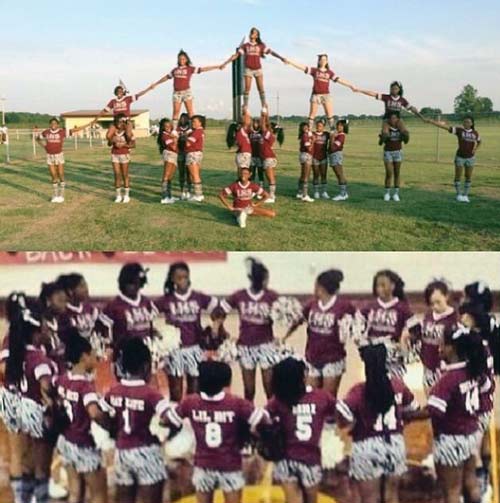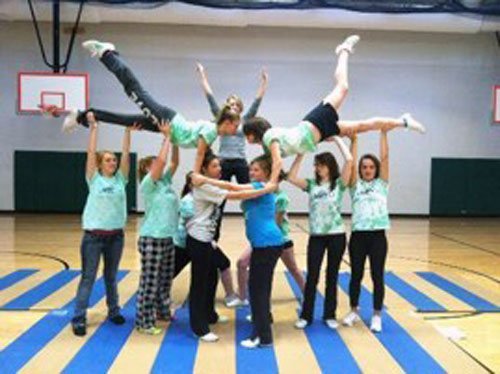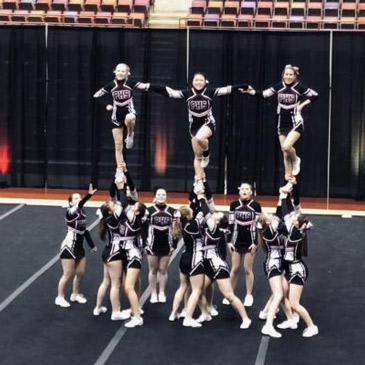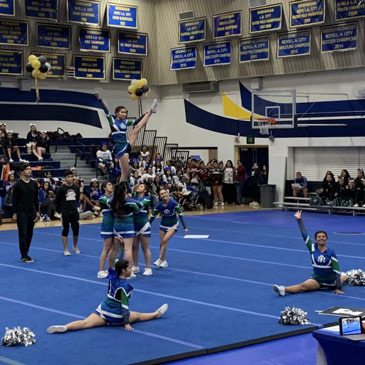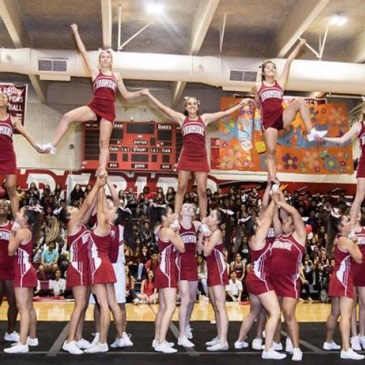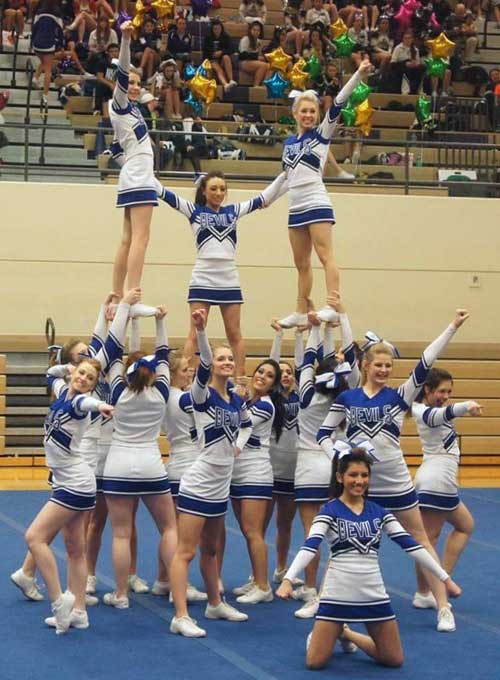Stunting Mats for Cheerleading Training Safety
Related Product: Cheerleading Mats 6x42 ft x 2 Inch Poly Flexible Roll
With that being said, proper cheerleading flooring has come under more scrutiny in recent years. Fall height has become a primary factor in determining the type of flooring or mats that are most appropriate to be used for various cheerleading activities and performances.
Hard Surfaces
Hard surfaces such as concrete or vinyl tile should be avoided at all costs as they offer little to no shock absorption, therefore increasing the risk for major injury. These types of surfaces are especially dangerous when performing stunts such as a pyramid or basket toss, which according to The American Journal of Sports Medicine (AJSM) are the two most common cheerleading activities to result in catastrophic injuries.A study of injuries sustained by 5- to 18-year-old cheerleaders, who were treated in U.S. emergency rooms between 1990 and 2002, revealed concussions and closed head injuries to be the most severe injuries.
The American Journal of Sports Medicine suggests mandating floor mats for complex stunts, and information in a 2009 report by the Journal of Athletic Training may just support that suggestion. Fourteen different surfaces were tested for critical heights in order to avoid serious head impact injury, and according to the report, the six worst surfaces for cheerleading (with a critical fall height of 2 feet or less) were concrete, vinyl tile, carpet, asphalt, rubberized track and dry dirt. Foam floors, grass, artificial turf and wood gym floors occupied the mid range with 3-4.5 foot critical heights. Landing mats and spring floors significantly reduced the risk of serious head injuries from falls of six feet or greater. The top performing surface was the spring floor, which had a critical height of 11 feet. Landing mats over top of a foam floor was close behind with a 10.5 foot critical height.
Puzzle Mats
In an effort to train safely on affordable and portable training cheer flooring, many cheerleaders and cheer coaches have begun using tatami textured foam puzzle mats, originally designed for martial arts training. Some of these puzzle mats, such as the 1 5/8-inch thick Grappling MMA Mats from Greatmats have a fall-height rating of 4 feet by the American Society for Testing and Materials (ASTM).Carpet Bonded Foam Mats
Carpet bonded foam mats typically come in 1 3/8 inch or 2 inch thicknesses and are 6x42 feet in dimension. This size lends to quick and easy setups as seven mats of this size, connected side to side will create a competition sized cheer floor. Home cheer floors are also available in more convenient and portable sizes of 4x6 or 5x10 feet mats.Folding Mats
Vinyl covered folding gym mats, ranging from 1.5 to 2.5 inches thick ,are commonly used for training exercises. When unfolded, these mats commonly range from 4x6 to 6x10 feet in size.Sprung Floors
Cheerleading related falls have been reported from up to 20 feet. Stunts resulting in these kinds of heights should only be performed over a landing mat over a foam floor or a sprung floor. Competition landing mats are 12-20 cm thick and are most often 6x12 feet to 8x18 feet in size and covered with a matte-textured vinyl. Sprung floors are typically made of plywood, springs or foam blocks, and carpet-bonded foam strips.When properly used, these types of cheer floors will help prevent serious head injuries. As is the case with any athletic activity, other type of injuries, such as wrist fractures and arm fractures, however, may still occur.


